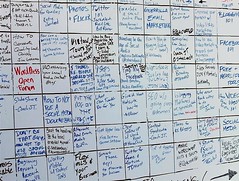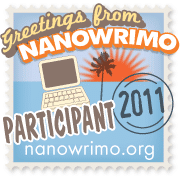Food. I like it. I like making it. I like eating it. Jami Gold made me think of this when she asked, “What Food Fuels Your Writing?” And when I’m writing, food can play two very important roles: fuel and incentive.
Yes, incentive. I’m not talking about fasting until you hit your word count. No, two words for you:
Incentive. Chocolate.
 I so want to do this, but I don’t know if I have the self-control. But the idea is that for every X number of words/pages/scenes/chapters you rack up, you get an incentive, like a piece of chocolate.
I so want to do this, but I don’t know if I have the self-control. But the idea is that for every X number of words/pages/scenes/chapters you rack up, you get an incentive, like a piece of chocolate.
But there’s more to a balanced diet than chocolate. There’s chocolate with peanut butter, chocolate with caramel, chocolate with cookies, chocolate with . . . What? Oh, other foods?
When you’re trying to write as fast as possible, one thing that also helps your life not fall apart: healthy snacks. I’m trying not to gain the “NaNo Nine”—and also not starve my children—so I’m planning to stock up on quick and easy snacks (for me and the kids!). Also, if I don’t have readily-accessible food around, I’m liable not to eat altogether, so emphasis on the quick and easy:
- Baby carrots (with hummus!)
- Celery sticks—prepare them in advance—with peanut butter
- Apple slices with peanut butter or cheese
- Grapes
- Cheese sticks
- Pretzels sticks and crackers (with hummus, peanut butter, cheese—you get the picture)
- Popcorn (especially air-pop)
That’s just a start, of course, but those are some of my favorites! Preparing them in advance is one of my tricks to keeping my family—and my health—from falling apart while I’m writing like crazy.
I also planned a month of meals in advance that are fast and easy to make that we like—like leftovers I squirreled away in the freezer this year that I never got around to using. Add in breakfast cereal and peanut butter sandwiches, and we’re all set. (Plus twice weekly mini grocery store runs for milk, produce and bread give me guaranteed face time with the kids!)
What fuels—or rewards—your writing? Did you do anything to prepare food-wise for NaNo?
Photo by Brent Miller




 As I’ve worked on all these things, I’ve had to review all my favorite plotting methods and character posts—on others’ blogs, and on my own. So if you’re getting ready for NaNoWriMo, here are some resources on my site that I’ve been thinking about and studying, and I hope they might help you prepare, too.
As I’ve worked on all these things, I’ve had to review all my favorite plotting methods and character posts—on others’ blogs, and on my own. So if you’re getting ready for NaNoWriMo, here are some resources on my site that I’ve been thinking about and studying, and I hope they might help you prepare, too. Finally, in case you’ve forgotten, I highly recommend plotting in advance. That way, you seldom spend three weeks pondering where your characters will go next and what they’ll do when they get there, and how on earth you’re going to spend 50,000 words getting from plot point 1 to plot point 2. (And also, we have a
Finally, in case you’ve forgotten, I highly recommend plotting in advance. That way, you seldom spend three weeks pondering where your characters will go next and what they’ll do when they get there, and how on earth you’re going to spend 50,000 words getting from plot point 1 to plot point 2. (And also, we have a 